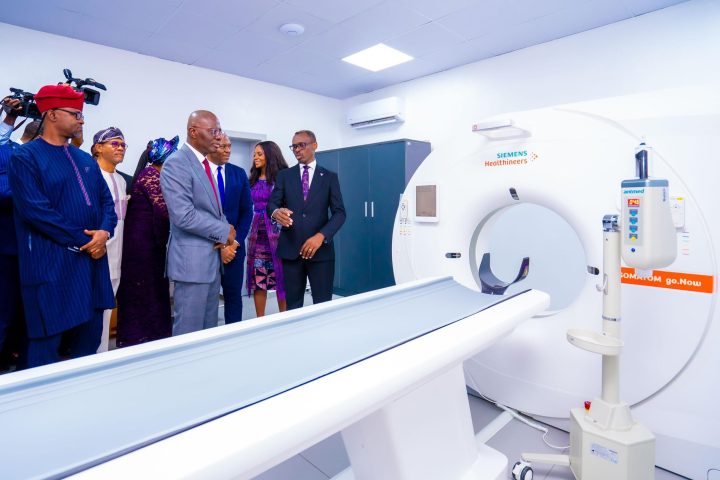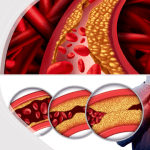Humans are evolutionarily hardwired for exercise since way back in the days of yore when we used to run after our two- and four-footed foods with our hefty clubs, spears or bows and arrows, our grass skirts waving merrily in the wind as we pursued our dinner, sweating, huffing and puffing. It was not a one-way traffic though, sometimes we were the dinner and have to run for our lives with a wild animal in hot pursuit. One way or the other, whether we were the hunter or the hunted, we had loads of exercises then.
Over the years there has been an explosion of health clubs or fitness centres to feed the ever-growing appetite of people wanting to either keep fit or just loose weight. Whatever is the reason for those participating in physical exercises, it is irrefutable that regular exercises have some health benefits. For example, when you exercise, your immune system is rejuvenated, and you burn fats (see 26 June 2022 issue of Prime Business Africa). These combined to lessen the incidence of cardiovascular disease, type 2 diabetes and other chronic diseases.
Join our WhatsApp ChannelExercise triggers off a host of molecular activities and signalling processes in the body, most of which are beneficial to maintaining regular body functions. Frequent physical exercise is known to cause physiological adaptations in skeletal muscle so that exercise performance is improved. It also enhances the body’s ability to resist many diseases and respond to treatment.
A study published in 2012 by I-Mee Lee and coworkers did indicate that you could live for more than four years longer by engaging in fast walking for at least one hour each day compared to somebody living a sedentary lifestyle or a couch potato (i.e. somebody who does no exercise and likes sitting around watching TV) – i.e. of course, if your death is from natural causes!
Cytokines, which are signalling proteins involved in inflammatory response, show optimum secretion after exercise. Interleukin-6 (IL-6) is a cytokine produced when muscles contract during exercise with an excessive level reached in high-intensity exercise. It modulates other interleukins, IL-10 and IL-1ra, to reduce inflammatory response and associated harmful effects. But when the body is at rest, excessive levels of IL-6 have a negative inflammatory effect and are associated with obesity and insulin resistance.
Dafna Bar-Sagi and coworkers reported in the July 2022 issue of the journal, Cancer Cell, that aerobic exercise reduces the tumour growth of pancreatic ductal adenocarcinoma. Working with mice, the researchers discovered that mice subjected to a 30-minute aerobic exercise for five days a week produced high levels of cytotoxic T cells called CD8 T cells. These CD8 T lymphocytes kill virus-infected cells as well as cancer cells. The CD8 T cells have a receptor for interleukin-15, which is released in the muscles during exercise. CD8 T cells bind to IL-15 to release a potent immune response on the pancreatic cancer resulting in a 40% survival rate for those mice with pancreatic cancer subjected to a regimen of 30-minute aerobic exercise for 5 days per week when compared with control mice not taking any exercise.
READ ALSO: World Hypertension Day: Medical Doctor Advocates For Regular Checkups, Exercises
In human subjects suffering from pancreatic cancer, one hour of aerobic and strength training per week resulted in more production of CD8 T cells. These people were twice as likely to survive for up to 5 years, compared with those in the control group not subjected to any exercise regimen.
Nuclear receptors called oestrogen (or estrogen) receptor-related receptors (ERRs) are induced by high-intensity exercise in such tissues as the heart and skeletal muscles (i.e. muscles attached to bones for movement). The ERRs have three subtypes, ERR-Alpha, Beta, and Gamma. Thomas Burris and coworkers reported in the March 2023 issue of the journal, ACS Chemical Biology, of the identification of a synthetic molecule they called SLU-PP-332, which is an ERR agonist (i.e. mimics ERR). This synthetic molecule targets all three ERR subtypes but has the highest potency for ERR-Alpha.
It was found that mice administered with the synthetic molecule, SLU-PP-332, have enhanced exercise endurance making it possible for the mice to run 70% longer and cover about 45% more distance. The researchers had earlier reported that obese mice when treated with the synthetic molecule, lost weight compared with control mice fed with the same diet.
Exercise like everything else not done in moderation can be harmful to health. For example, exercise exerts stress on the body. Mitochondria are the main energy suppliers to cells as well as assist in cell proliferation and metabolic processes. During exercise, the mitochondria not only increase the amount of energy produced but also the amount of reactive oxygen species (ROS). Excess amount of ROS damages important biomolecules in the body, including proteins, lipids and nucleic acids. But if the exercise is regular, the body builds up resistance against oxidative damage. An important part of this process is the activation of genes encoding protective antioxidant enzymes.
It is known that people engaged in endurance sports are prone to developing a worrying type of arrhythmia (i.e. irregular heartbeat) called atrial fibrillation (AF). Atrial fibrillation is common with age and in those suffering from certain conditions, including diabetes, hypertension, lung cancer, asthma, pneumonia, obesity, etc. Also, individuals with taller stature averaging 174 cm and above, have increased risk of AF. In AF condition, the atria (i.e. the upper chambers of the heart), beat irregularly and at an abnormally fast rate, which does not synchronise with the ventricles (i.e. the lower chambers). Symptoms of AF include breathlessness, fainting, fatigue, chest pain, etc., and if left untreated or persists for long, it could progress to cardiovascular disease and stroke.
Physical exercise is one of the remedies for AF, but it is known that the hearts of endurance athletes can enlarge so much as to press against the chest wall and spine. Therefore, athletes who are engaged in intense exercise are as much as 5 times likely to develop AF either during their sporting career or after retirement than non-athletes of the same age group.
Advice: Exercise is good for you, but moderation is the key.





![Relishing Ugba [Oil Bean] Delicacy](https://www.primebusiness.africa/wp-content/uploads/2025/06/Ugba-delicacy-720x480.jpg)












Follow Us